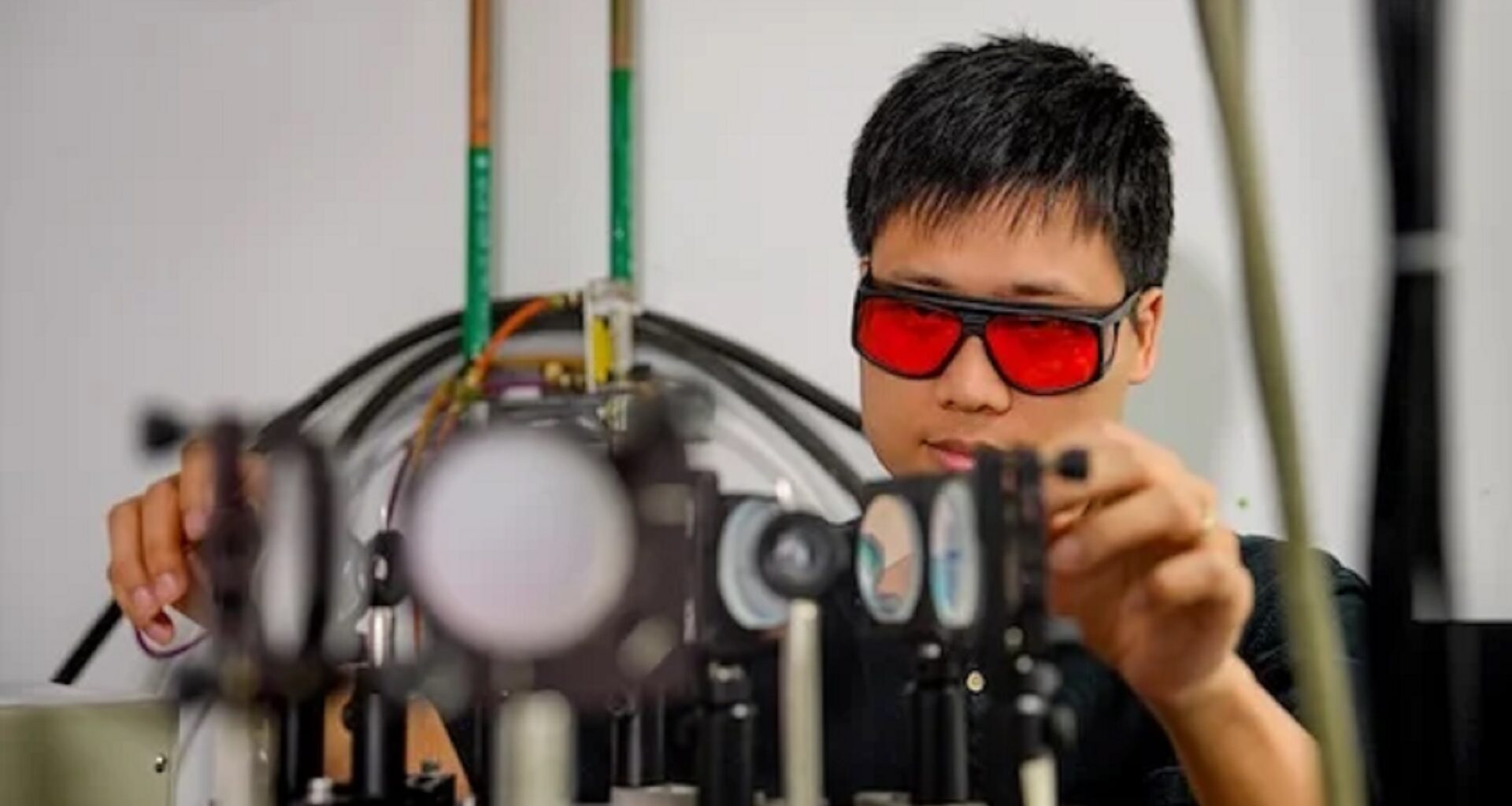Scientists have found a way to make atoms dance with light, quite literally.
In certain crystals, vibrations called phonons can now merge with light waves to form entirely new hybrid states of matter. This breakthrough could change how energy flows in devices like solar cells and LEDs.
A team from Rice University and collaborators has discovered a way to make two phonons in thin films of lead halide perovskite interact with light so strongly that they form entirely new hybrid states of matter.
To trigger this effect, the researchers used nanoscale slots in a thin layer of gold, each about a thousand times thinner than a sheet of cling wrap. These slots acted as tiny metallic traps for light, tuning it to the frequency of the phonons. This strong interaction is called “ultrastrong coupling.”
“This is the first room-temperature demonstration in a perovskite thin film where two phonons enter the ultrastrong coupling regime with a single engineered terahertz resonance,” said Dasom Kim, a Rice doctoral alumnus and first author of the study.
Tuning light precisely
The team fabricated slots of seven different sizes. Longer slots trapped lower-frequency light, while shorter ones trapped higher frequencies. The idea was to match the light frequency to the vibrations of the perovskite material.
“We fabricated arrays of nanoscale slots with seven slightly different lengths to tune a single terahertz resonance and deposited perovskite thin films on top,” Kim said.
“Designing the slot geometry allowed us to shape the interaction between light and the perovskite phonons without using high-power laser pulses or bulky crystals.”
The result was the appearance of three distinct hybrid quantum states known as phonon-polaritons, the new blends of vibration and light.
“The coupling ratio reached roughly 30% of the phonon frequency at room temperature,” Kim added.
Steering energy flow
This breakthrough allows scientists to control energy transport in optoelectronic materials in a gentle, device-compatible way. Unlike previous approaches, it does not rely on extreme conditions or high-power lasers.
“Advances in nanofabrication and perovskite film quality made it possible to reach this regime reliably,” Kim said.
Junichiro Kono, the corresponding author and director of the Smalley-Curl Institute at Rice, said, “This offers a gentle, device-compatible way to influence processes that matter for light harvesting and light emission, potentially improving performance and reducing energy losses.”
“What makes this result stand out is that we were able to uncover entirely new phonon behavior without extreme conditions just by carefully designing the nanoscale environment,” Kono added.
Numerical simulations and a theoretical quantum model validated the experimental results, confirming that the two phonon modes were indeed in the ultrastrong coupling regime.
The study opens new avenues for tuning quantum interactions in materials, which could eventually enhance solar cells, LEDs, and other optoelectronic devices by controlling how energy moves at the microscopic level.
The findings of the study have been published in Nature Communications.
